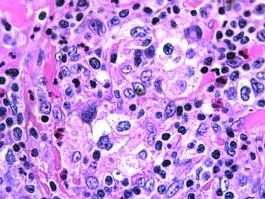
What is lymphoma? This type of cancer is a form of white blood cell cancer, and there are two different types. Hodgkin lymphoma is slow-growing, while aggressive non-Hodgkin lymphomas grow rapidly and spread to other parts of the body. Fortunately, many cases of lymphoma are curable. However, there are several factors that must be considered before seeking treatment.
A diagnosis of lymphoma is often made by performing a physical examination and blood tests, as well as a chest x-ray. If the diagnosis is made, your doctor will use biopsy and targeted therapy to fight the cancer cells. If you have lymphoma and are not experiencing symptoms, you may not need treatment. Nonetheless, if you’re not showing any signs of this type of cancer, you should seek medical attention.
Diagnosing lymphoma can take several days or weeks. In some cases, the disease can be detected at an early stage using a biopsy. Your doctor will order blood and urine tests to determine the type of cancer. A biopsy of the affected areas may also be performed. Some patients will not need any treatment, while others will have to wait several months for the cancer to begin to grow. If you have persistent or slow-growing lymphoma, the site somosmass 99 will recommend the right course of treatment and more information about preventing the disease.
The diagnosis of lymphoma is usually made by a doctor during a routine physical examination. This type of cancer causes no obvious symptoms and is often cured with surgery. The only way to confirm the diagnosis is a lymph node biopsy. This procedure involves taking a sample of the affected lymph node. The sample is then examined under a microscope in the laboratory. In addition to the biopsy, your doctor will also perform a complete blood count, liver function, and electrolyte and urea tests to determine kidney damage.
The lymphatic system produces white blood cells called lymphocytes. These cells help our immune system remember pathogens and bacteria in our body. In lymphoma, these cells begin to multiply uncontrollably and accumulate in the body’s lymph nodes. Despite its name, lymphoma is a type of cancer of the lymphatic system. The lymphatic system is a vital part of the human body, and there are many lymph nodes throughout the body.
Although the diagnosis of lymphoma is often made based on symptoms, it is important to remember that the disease is caused by abnormal lymphocytes. Normal people have a healthy immune system that produces healthy white blood cells. In lymphoma, lymphocytes grow out of control and become cancerous. This type of cancer is considered a form of leukemia and can be a fatal disease.
During a routine physical examination, the doctor detects low-grade lymphoma. Because it has no symptoms, it is difficult to diagnose. The only way to confirm the diagnosis is a lymph node biopsy. This is a surgical procedure in which a sample of the diseased lymph node is removed. After this, the patient will undergo a complete blood count and liver function test. A CT scan of the body will also show whether the tumor has spread to other areas.
Typically, the diagnosis of lymphoma begins in the lymph system. The lymphatic system is a network of tubes and lymphocytes that filter bacteria and foreign debris from the body. It also helps to create an immune response. If there is an abnormality, the doctor may perform a biopsy to determine the type of cancer cells. During this process, the doctor will be able to confirm if lymphoma is the cause of the symptoms.
After determining the underlying cause of the problem, the doctor will evaluate the lymph nodes in the body. If they are swollen, they will be inspected to check for infection. The doctor will also look for any abnormal white blood cells, which are characteristic of lymphoma. A biopsy is needed to make a definitive diagnosis. If the cancer is slow-growing, it may only require a few months of watchful waiting to determine the cause of the problem.